Great Barrier Reef coral growth at record levels, finds Australian Institute of Marine Science
Long-term monitoring of the Great Barrier Reef has shed some good news about the health of the world heritage beauty.
Coral coverage on the northern and central parts of the Great Barrier Reef is at its highest level since monitoring began 36 years ago, the latest monitoring report has found.
The annual report from the Australian Institute of Marine Science (AIMS), released today, reveals reef coral coverage in the north has gone from 27 per cent last year to 36 per cent in 2022, while in the central region it has increased from 26 to 33 per cent.
Both represent record levels.
In the southern region, coral coverage dropped from 38 per cent in 2021 to 34 per cent this year.
Assessing all 2900 reefs that make up the 2300km-long natural wonder would be impractical. AIMS’ findings come from in-water monitoring of 87 reefs, the vast majority of which have been studied in previous years. A few are sites of reef restoration projects. Researchers are towed behind boats and assess the coverage and condition of the coral visually.
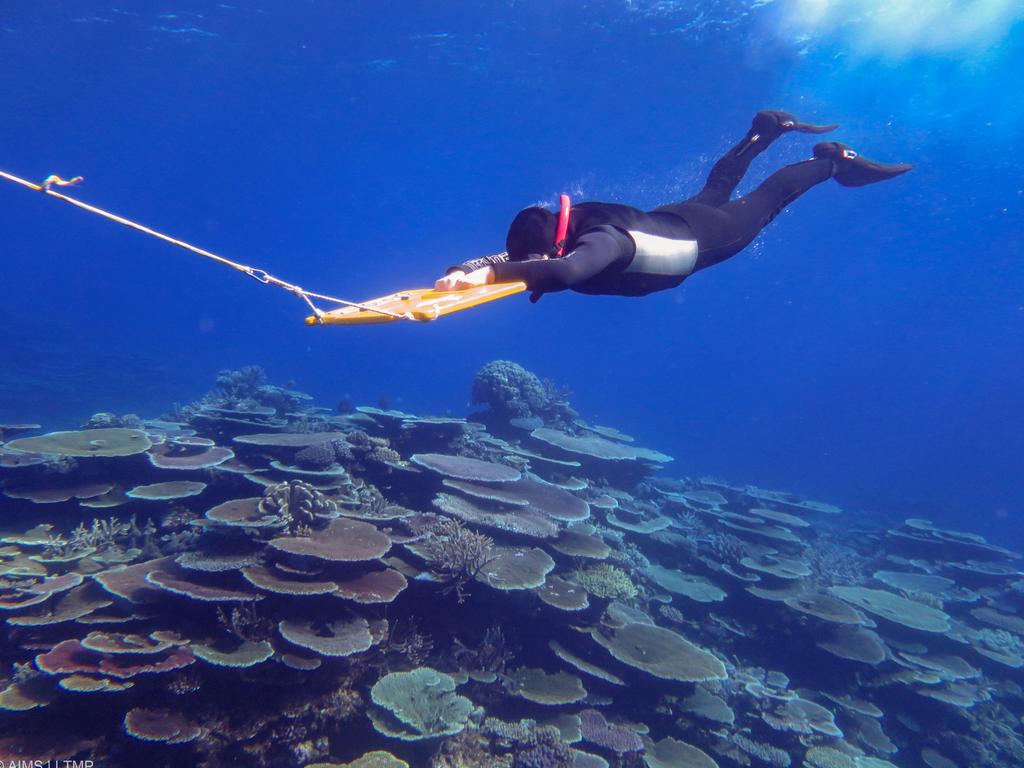
Just before the election, the Great Barrier Reef Marine Park Authority quietly released findings of an aerial survey of 719 reefs, finding evidence of bleaching on 91 per cent of them.
AIMS also found evidence of bleaching, although some of its most recent surveys were conducted before last summer’s bleaching event, the fourth in seven years.
Head researcher Dr Mike Emslie said the 2016 and 2017 bleaching events led to widespread coral mortality, but the marine heatwaves that prompted bleaching in 2020 and 2022 were shorter in duration and less intense.
“There will probably be some corals that have died from this event, but we’re not going to see anywhere near the levels like we saw in 2016, 2017,” Dr Emslie said.
“All bleaching events are different and the fact we’ve had four now in seven years and one in a La Nina year is really concerning. The reef is in uncharted territory.”
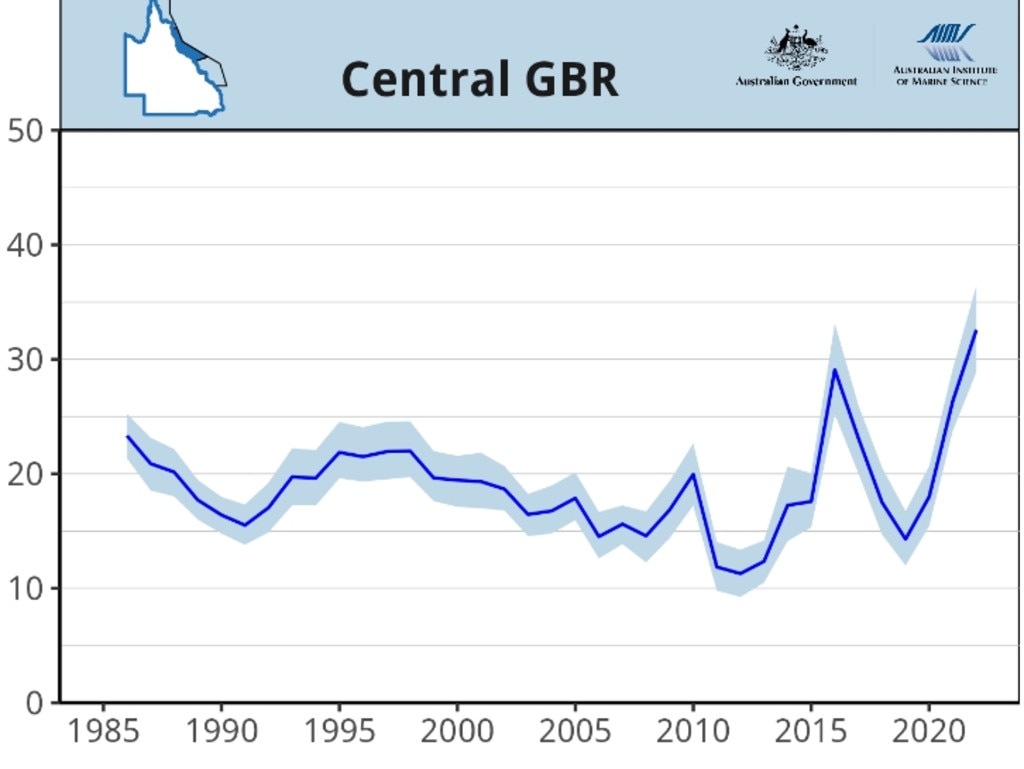
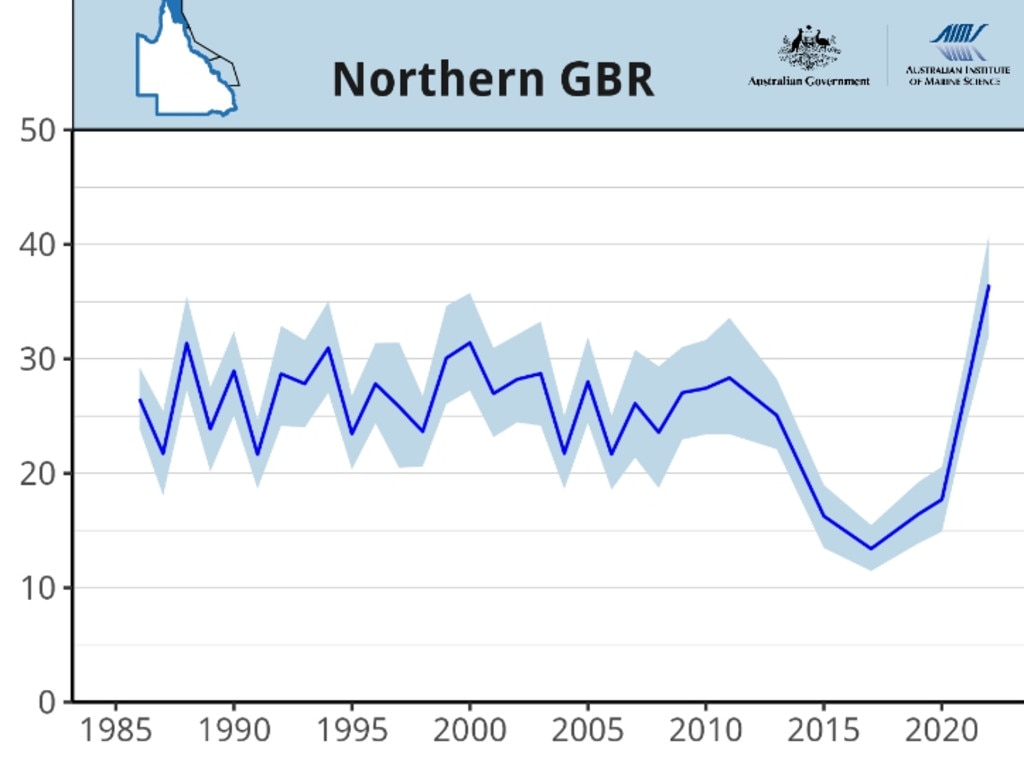
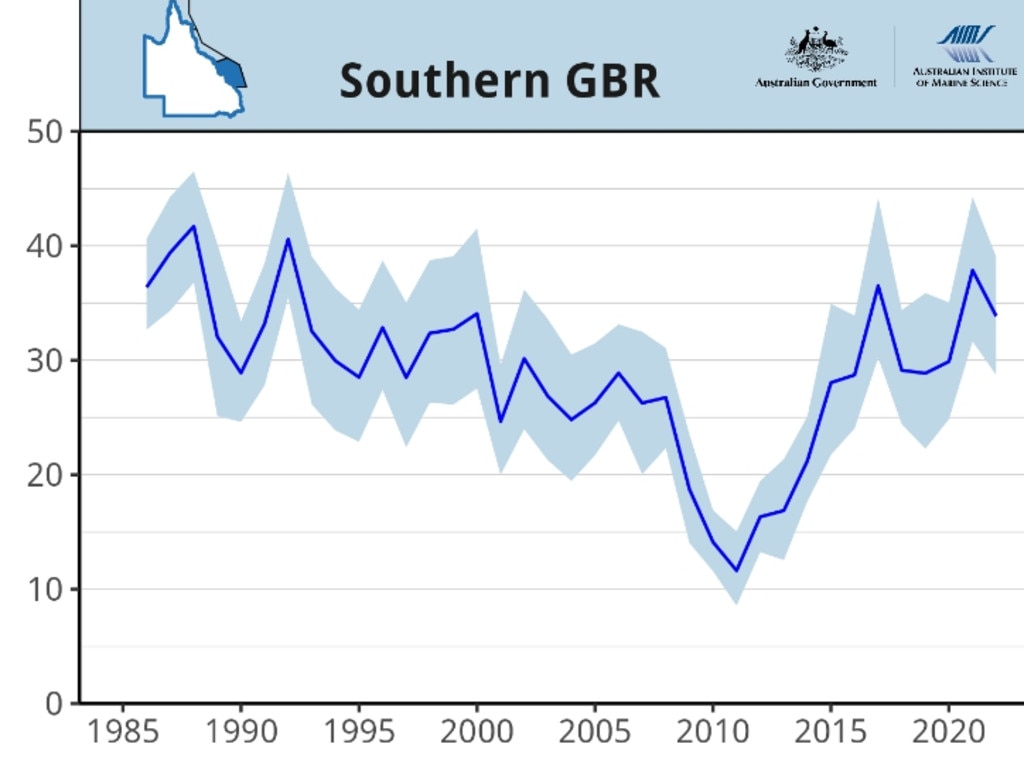
The recovery of reefs in the north and central regions was driven by several factors, including fewer destructive storm events, and the regrowth was being spearheaded by fast-growing Acropora corals, Dr Emslie said.
But while these branching and table corals can replenish quickly, they are also more susceptible to storm damage and bleaching than other coral formations, he said.
The Acropora corals are also the preferred food of the crown of thorns starfish, which remains a scourge, particularly in the waters stretching between Proserpine and Gladstone.
The AIMS study found signs of crown of thorns outbreaks on seven of the 28 reefs they surveyed in this region.
AIMS CEO Dr Paul Hardisty said a third of coral growth detected in the south last year had been subsequently wiped out by crown of thorns starfish outbreaks.
“This shows how vulnerable the reef is to the continued acute and severe disturbances that are occurring more often, and are longer-lasting,” he said.

A crown of thorns control program, currently funded by the Great Barrier Reef Foundation, has culled 1.1 million of the creatures over the past decade.
Foundation program director Dr Mary Bonin said the crown of thorns starfish is native to reefs throughout the Pacific, so the goal was not to eradicate them, but to manage their numbers in regions where coral was struggling to survive.
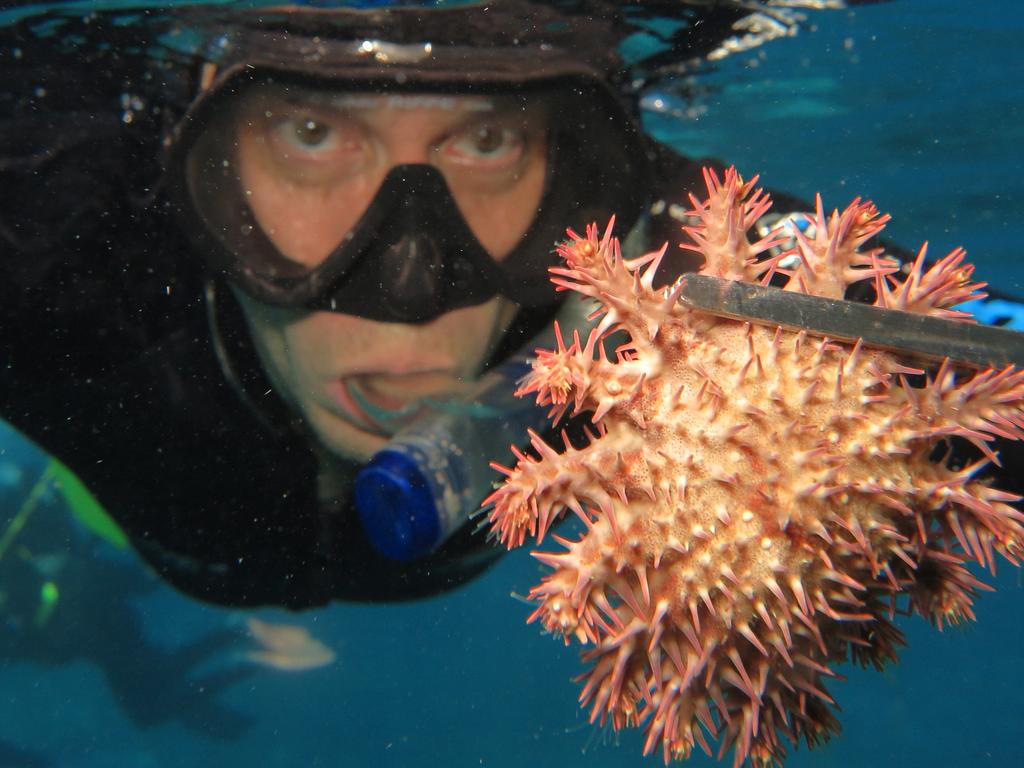
During outbreaks the starfish were “voracious predators”, but they were also “highly fecund,” she said, with females producing 60 million eggs in a season.
“It’s not about getting rid of all the starfish … it’s about getting them down to that level where coral growth and recovery outpaces the impact of their feeding,” Dr Bonin said.
Originally published as Great Barrier Reef coral growth at record levels, finds Australian Institute of Marine Science




